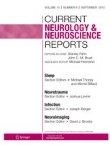
Abstract
Purpose of Review
Epilepsy associated with periventricular nodular heterotopia (PNH), a developmental malformation, is frequently drug-resistant and requires focal therapeutic intervention. Invasive EEG study is usually necessary to delineate the epileptogenic zone, but constructing an accurate hypothesis to define an appropriate electrode implantation scheme and the treatment is challenging. This article reviews recent studies that help understanding the epileptogenicity and potential therapeutic options in PNH.
Recent Findings
New noninvasive diagnostic and intracerebral EEG analytic tools demonstrated that cortical hyperexcitability and aberrant connectivity (between nodules and cortices and among nodules) are likely mechanisms causing epilepsy in most patients. The deeply seated PNH, if epileptogenic, are ideal target for stereotactic ablative techniques, which offer concomitant ablation of multiple regions with relatively satisfactory seizure outcome.
Summary
Advance in diagnostic and analytic tools have enhanced our understanding of the complex epileptogenicity in PNH. Development in stereotactic ablative techniques now offers promising therapeutic options for these patients.




Δεν υπάρχουν σχόλια:
Δημοσίευση σχολίου